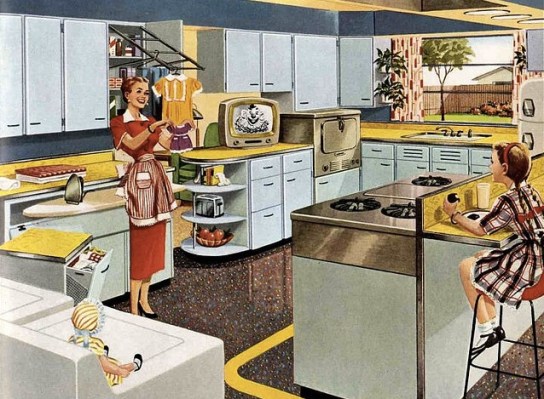2011 saw many interesting developments in the virtualization of goods. The growth of app stores continued unabated, aided by huge sales of iOS devices and Android handsets, and media of all kinds continued the move to a totally non-physical state for the end user: Netflix, Spotify, and other services make the idea of storing your things, whether on your hard drive or in stacks by the TV, seem very… 2010. Widespread adoption of non-physical media is sparking new industries and setting fire to old ones.
But we also are seeing increasing frustration with the limitation of our digital acts to affecting digital things, and vice versa. The cutting edge of technology seems to be confined to the borders of our screens. People don’t freak out about the Nest or the Little Printer because they’re really such revolutionary devices – they aren’t. People are excited because these things portend the fulfillment of the promise technology has unwittingly made: that it will change the way we live, not just the way we consume.
Because as much as the media we consume entertains and to an extent defines us, it is only one facet of how we live, yet the delivery mechanisms of these media have borne the great majority of visible improvements in the internet and mobile revolution. What has been left behind? The way we create things, move and adjust things in “real life,” the way we interact with each other outside of our devices, the way we cook and sleep and run. Some small advances have been made here (things like Nike+ cross over, and the popularization of photo and location sharing apps to some extent), but how far have, say, refrigerators, or beds, come in the last ten years – compared with the way we experience music, or keep in touch with our friends?
This order of things was inevitable: naturally, there are some things that will be more easily and fundamentally changed by the addition of mobiles and broadband, media delivery among them. You wouldn’t expect baby carriages to be leading the charge of connected devices. Yet why shouldn’t your perambulator record the distance it travels, track the weight of the child, network with other nearby prams to determine parental hot spots? Such things sound frivolous, but frivolity makes up the majority of our application of tech, and the more we use it, the more indispensable it becomes. A digital compass on your phone, for instance. A novelty at first, but after a few years, a standard part of the modern tech-user’s toolkit.
For many, it smacks of excess, of tacky Skymall Frankendevices for the lazy and easily distracted. But it’s just the next step in the dance we’ve all been doing since we got our first modems. Breathing the principle of interconnectedness into things for which the benefits of doing so are not obvious is creating a new class of devices, and we crave them because our experience of technology is so limited.
This isn’t to say that tweeting microwaves are to deliver us from an evil prison of consumption-oriented technology. It’s just that the future is, and always has been, banal. The leading edge of tech is an exciting place, but the trailing edge cuts a wider swath. The Jetsons had flying cars, sure, but they also had space-age plant pots and dog collars.
The next year will have more of the same stuff, of course: bigger TVs, cooler tablets and phones, and increasing capacity for everything, everywhere. But it also will showcase the quieter, more wide-reaching changes that come when these new capabilities begin to infiltrate the vast empire of banality. And in a few years, when your oven messages you to say the roast has reached 160 degrees, or the shower recognizes your face and adjusts the temperature accordingly, you will wonder how you ever lived without it. And this miracle oven will be more relevant to many millions of people than, say, the empowerment of the oppressed and destitute to communicate freely or access the knowledge of the ages. No, it’s not pretty; it’s progress. And we’ll be seeing a lot of it.
